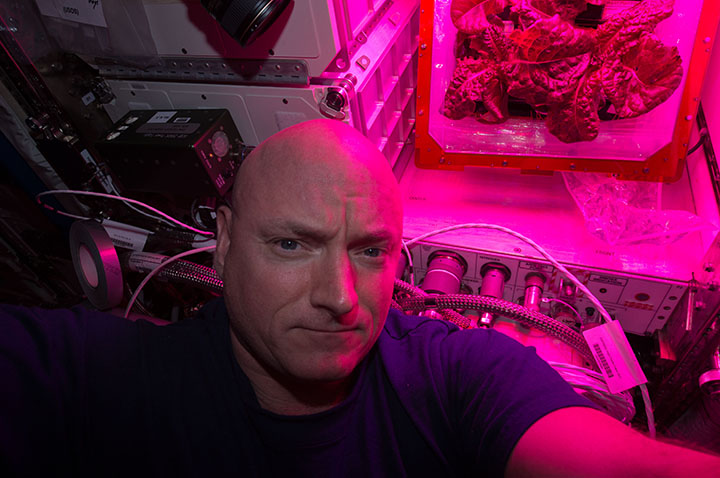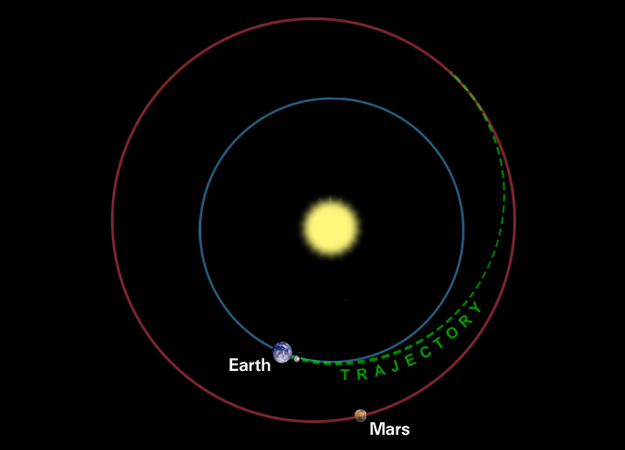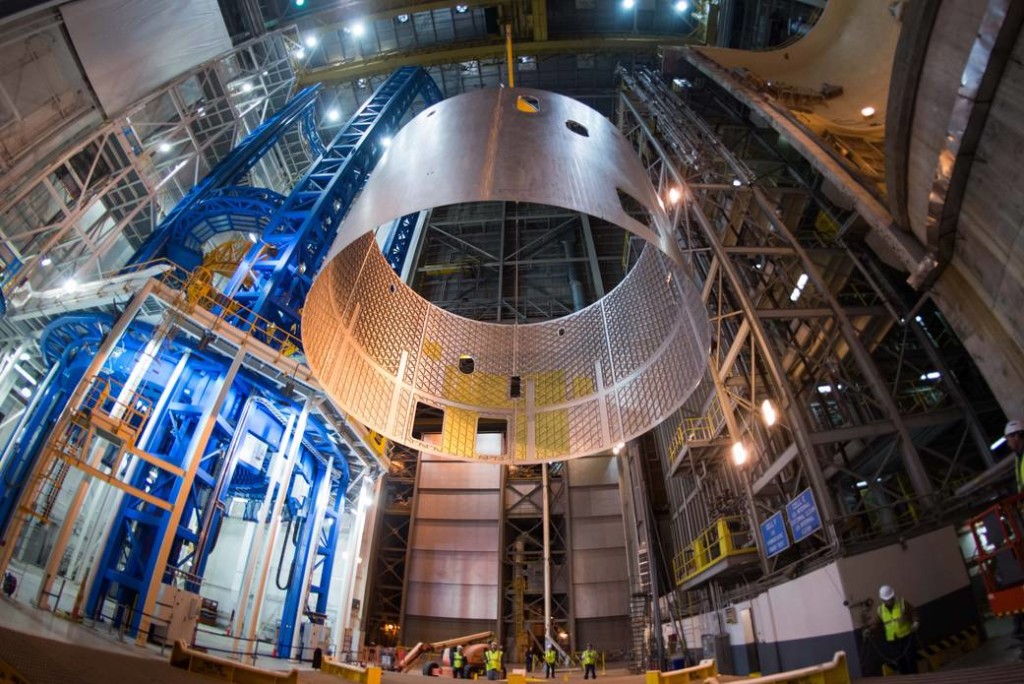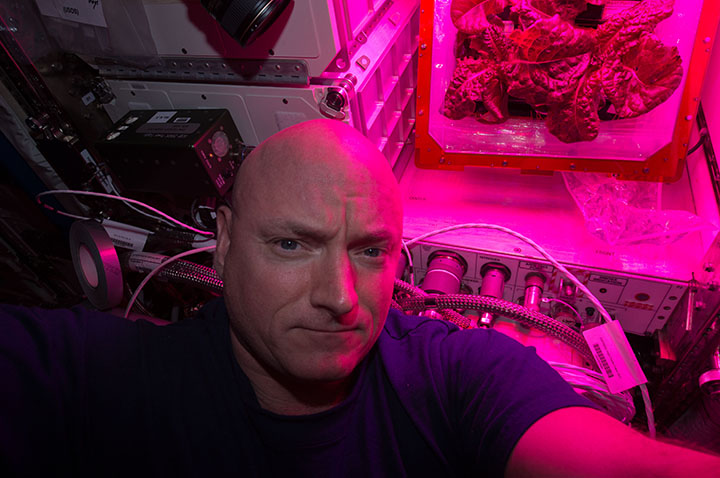During his yearlong mission aboard the International Space Station, Scott Kelly traveled over 143 million miles in orbit around Earth.
On average, Mars is 140 million miles away from our planet.
Coincidence? Well, basically.

There’s nothing average about a trip to Mars; so of course you don’t travel an “average distance” to get there. Launches for robotic missions – the satellites and rovers studying Mars today – are timed around when Earth and Mars are about a third of that distance, which happens every 26 months.
While the shortest distance between two points is a straight line, straight lines are hard to do in interplanetary travel. Instead, Mars missions use momentum from Earth to arc outward from one planet to the other. The Opportunity rover launched when Earth and Mars were the closest they’d been in 60,000 years, and the rover still had to travel 283 million miles to reach the Red Planet.
On the International Space Station, Scott Kelly was traveling at more than 17,000 miles per hour, an ideal speed for orbital research that keeps the station steadily circling Earth every 90 minutes. To break free of orbit and go farther to deep space, spacecraft have to travel at higher speeds. Opportunity, for example, traveled at an average of 60,000 miles per hour on the way to Mars, covering twice the distance Kelly traveled on the station in just over half the time.

The fastest any human being has ever traveled was the crew of Apollo 10, who hit a top speed of almost 25,000 miles per hour returning to Earth in 1969. For astronauts to reach Mars, we need to be able to propel them not only faster than the space station travels, but faster than we’ve ever gone before.
But the real lesson of Kelly’s year in space isn’t the miles, it’s the months. The human body changes in the absence of the effects of gravity. The time Kelly spent in space will reveal a wealth of new data about these changes, ranging from things like how fluid shifts in microgravity affected his vision to the behavioral health impacts of his long duration in the void of space. This information reveals more about what will happen to astronauts traveling to Mars and back, but it also gives us insight into how to equip them for that trip, which will be approximately 30 months in duration round-trip. What sort of equipment will they need to keep them healthy? What accommodations will they require to stay mentally acute? What sort of vehicle do we need to build and equip to send them on their journey?
Months and millions of miles. Momentum and mass. These are some of the most basic challenges of Mars. We will need to build a good ship for our explorers. And we will need the means to lift it from Earth and send it on its way fast enough to reach Mars.

While Scott Kelly has been living in space helping us to learn more about the challenges, we’ve been working on the rocket that will be a foundational part of addressing them. Scott Kelly left Earth last year half a month after the Space Launch System (SLS) Program conducted a first qualification test of one of its solid rocket boosters. Since then, we have conducted tests of the core stage engines. We’ve started welding together fuel tanks for the core stage. We’ve begun assembling the upper stage for the first flight. We’ve been building new test stands, and upgraded a barge to transport rocket hardware. The Orion program has completed the pressure vessel for a spacecraft that will travel around the moon and back. Kennedy Space Center has been upgrading the facilities that will launch SLS and Orion in less than three years.
And that’s just a part of the work that NASA’s done while Kelly was aboard the space station. Our robotic vanguard at Mars discovered evidence of flowing liquid water, and we’ve been testing new technologies to prepare us for the journey.
Down here and up there, it’s been a busy year, and one that has, in so many ways, brought us a year closer to Mars. The #YearInSpace months and millions of miles may be done, but many more Mars milestones are yet to come!
Next Time: Next Small Steps Episode 3
Join in the conversation: Visit our Facebook page to comment on the post about this blog. We’d love to hear your feedback!

